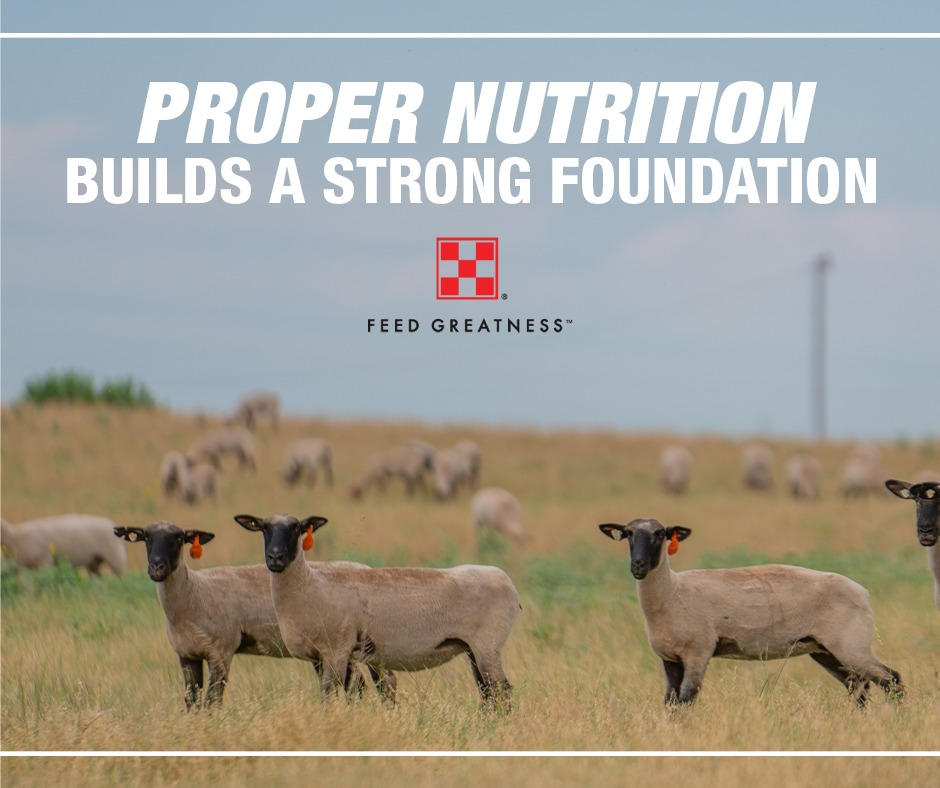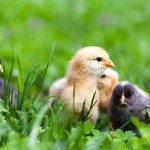 Each stage of a sheep’s production cycle calls for specific sheep nutrition requirements to help them perform at their best and meet their genetic potential. Sheep nutrition requirements include six nutrients (water, protein, fat, carbohydrates, minerals and vitamins) and energy (received from the protein, fat, and carbohydrates consumed).
Each stage of a sheep’s production cycle calls for specific sheep nutrition requirements to help them perform at their best and meet their genetic potential. Sheep nutrition requirements include six nutrients (water, protein, fat, carbohydrates, minerals and vitamins) and energy (received from the protein, fat, and carbohydrates consumed).
Follow these tips for providing the right sheep nutrition for year-round flock success:
Rams that are too thin or fat will not perform as expected. While pasture or hay is the best feed for rams in the off season, larger-framed rams or those that need to gain weight will need to receive supplemental feed. Critical to the ram’s fertility and breeding success is a proper mineral and vitamin supplement that provides the key nutrients: zinc, selenium and vitamin E.
Ewe nutrition at every stage
Ewe nutrition needs vary more throughout the year than rams due to the changes in their reproductive status. There are five main reproductive stages that determine ewe nutritional requirements, including maintenance, breeding, early gestation, late gestation and lactation.
Feeding ewes during maintenance
The lowest ewe nutrition and energy requirement is during maintenance. For a typical sheep flock this occurs after lambs are weaned from the ewe and before the ewe is rebred. In an accelerated lamb program, the ewe may never be in maintenance, or in an early weaning program, maintenance may last 20 weeks. Although ewes in maintenance are only maintaining themselves, it does not mean nutrition is not important. Usually, the ewe in maintenance can meet her energy and protein requirements with pasture or hay alone.
Depending on quality of the forage and the soils on which it was grown, both vitamins and minerals would need to be supplemented through a sheep mineral and vitamin mix offered free-choice.
 Sheep breeding season
Sheep breeding season
Two to four weeks prior to the sheep breeding season and two to four weeks into the breeding season, ewe nutrition and energy intake can be increased to help optimize ovulation rate and the opportunity for multiple births. This period is called flushing. Flushing can be accomplished by placing ewes on high quality pasture or adding energy in the form of a grain mix or sheep feed pellets.
Early gestation ewe nutrition
Following the sheep breeding season, bred ewes can be placed on a sheep nutrition program to maintain their weight. Although ewes are bred, the fetuses are only growing a small amount during the first and second trimester. Ewes can be fed on pasture or if in confinement, a good quality grass hay. In both situations, ewes should be fed a sheep mineral and vitamin mix to complement the nutrient content of the forages fed.
Late gestation ewe nutrition
As ewes enter late gestation, the greatest growth of the fetuses occurs and ewe nutritional requirements and energy needs increases. During this period, a 220 lb. (100 kg) ewe, pregnant with a single lamb, will have a 50 percent and 71 percent increase in energy and protein requirements, respectively, compared to maintenance requirements. Ewes with twins or triplets have energy and protein requirements 25 percent to 41 percent greater than ewes carrying a single lamb. The size of the ewe and number of lambs will determine how much supplemental energy and nutrients is required along with good quality hay to meet ewe nutritional requirements.
Feeding ewes post lambing
After the ewe lambs, lactation is the period of the reproductive cycle with the greatest ewe nutritional requirements. During early lactation, the first eight weeks after lambing, the ewe produces the most milk. For a 220 lb. ewe nursing a single lamb, the energy and protein requirement will increase another 35 percent and 90 percent, respectively, compared to ewe nutritional requirements during late gestation. The ewe with twin and triplets will have greater energy and nutrient requirements than the ewe nursing a single lamb. In most cases, supplemental feed will be needed along with a high-quality forage to meet the elevated ewe nutrient demand.
When lambs are one week old, it is a good time to start offering a creep feed so lambs learn to eat dry food and to provide extra energy and nutrients. At first, lambs will only nibble the creep feed, but as they get older they will eat more and more. Ensure the creep feed is in an area that prevents the ewes from access and keep the feed fresh and always available. Providing a creep feed helps the lambs adapt to eating only dry food upon weaning.
Ewe nutrition includes water
One sheep nutrition need that is often overlooked is water. Water is a critical nutrient to assist with nutrient transport, heat dissipation and milk production. Allow the sheep flock free access to clean fresh water always. As with water, it is always good to provide a sheep mineral and vitamin mix to supplement and balance the forages in the diet being fed.
Best feed for rams
Breeding rams may only have one job, one or two times a year to do, but what happens the rest of the year is important to their success. During a 45-day sheep breeding season, rams can lose up to 12 percent of their body weight. Rams will need to be fed a diet to regain body condition lost during the breeding season and to achieve a body condition score of 3.5 to 4, out of 5, before the next sheep breeding season. Yearling rams are still growing, so they too may need extra feed. By providing appropriate feed to meet sheep nutrition requirements in every stage of life and production will provide sustained nutrition to allow the animals to reach their genetic potential.
Give ewes and rams the nutrition they need year-round with Purina’s line of sheep nutrition products.
Michael Schlegel, Ph.D., PAS, Dipl. ACAS-Nutrition


